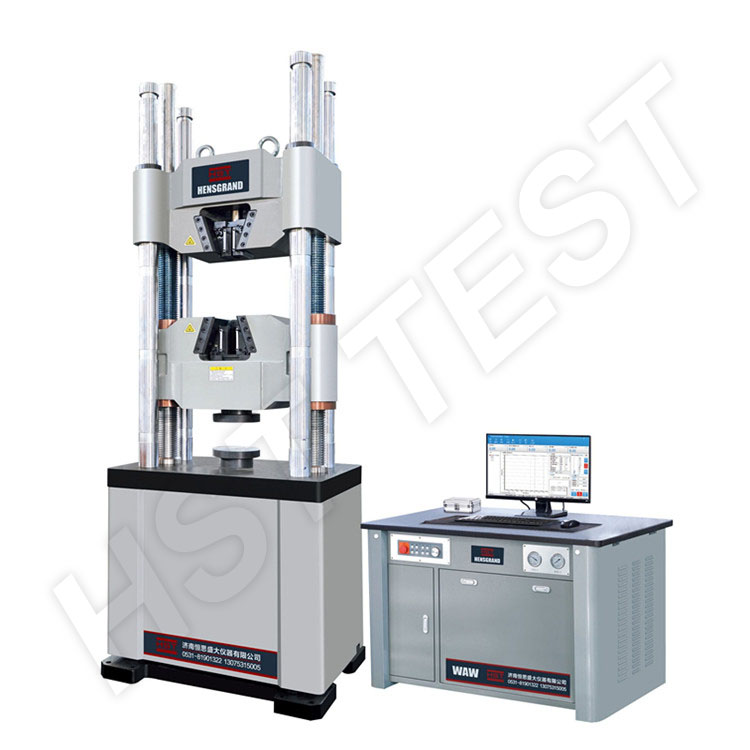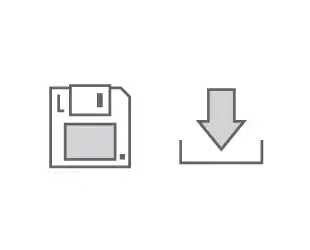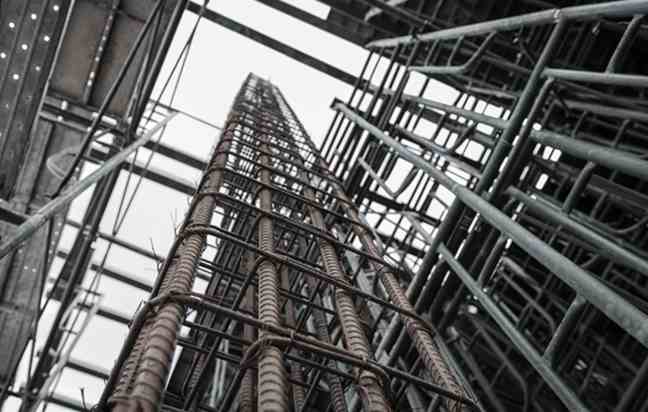
Landmark® Servohydraulic Test Systems

From complex thermomechanical fatigue studies to standard tension and compression tests, MTS Landmark systems deliver accurate, repeatable results. Robustly manufactured with SureCoat® technology that extends actuator rod longevity 10x over conventionally chrome-plated rods, these systems will perform reliably for years.
Product information
FAQ
Files Download
See Full Product Info Request A Quote1.Application:
Servo Universal Testing Machine adopts hydraulic loading, Computer Display, easy and convenient to operate. It is mainly used to execute the tension, compression, bending, flexural etc. Test for metal materials. Attached with simple accessories and devices, it can be used to test wood, concrete, cement, rubber, and so on.It is very suitable for making test to different metal or nonmetal materials under high toughness and hardness against extreme big loading force.
2.Standards:
ISO6892, BS4449,ASTM C39,ISO75001, ASTM A370, ASTM E4, ASTM E8 and BSEN standards.
4.Specifications:
| MODEL | WAW-2000E |
|---|---|
| Max. Test Load(kN) | 2000 |
| Max. Test Load(kN) | 2000 |
| Max. Test Load(kN) | 2000 |
| Max. Test Load(kN) | 2000 |
| Max. Test Load(kN) | 2000 |
Features
-

NEW Normal 01
Check the Status of Tests from a Remote Location
- The remote monitoring function enables instruments at separate locations to be assessed.
- The notification function informs users by email of any status changes during a test.
-

NEW Normal 02
Check the Status of Tests from a Remote Location
- The remote monitoring function enables instruments at separate locations to be assessed.
- The notification function informs users by email of any status changes during a test.
-

NEW Normal 03
Check the Status of Tests from a Remote Location
- The remote monitoring function enables instruments at separate locations to be assessed.
- The notification function informs users by email of any status changes during a test.
FILE DOWNLOADS
| Name | Type | Size | Download |
|---|---|---|---|
| Product Information: Puncture tester | 533 KB |
|
|
| Product Information: Puncture tester | 533 KB |
|
FAQ About Universal Testing Machine
-
What is a universal testing machine?
A Universal Testing Machine (UTM) is a flexible mechanical testing system used to assess the strength, stiffness, and performance of materials under tension, compression, bending, and more.
Known by various names—such as tensile tester or tensile strength testing machine—it applies controlled force and records material response to determine mechanical properties like elongation, yield strength, and fracture point.
The term “universal” reflects its ability to run multiple standardized tests (tensile, flexural, peel, shear, puncture) using interchangeable fixtures. Equipped with components like load cells, crossheads, and grips, and operated through specialized software, a UTM ensures materials meet ASTM, ISO, and other international standards.
It is widely used in product development, quality control, and material research across industries ranging from plastics and metals to textiles and composites.
-
How does a universal testing machine work?
A UTM Machine works by applying a controlled force to a test specimen while measuring its response to stress. The specimen is secured between grips or fixtures, and the machine’s crosshead moves either upward or downward depending on the test type: tensile, compression, or flexural.
A load cell measures the applied force, while extensometers or displacement sensors track deformation. These signals are processed through software that displays real-time stress-strain data.
The machine continues loading until the material yields, breaks, or reaches a predefined limit, allowing accurate evaluation of properties like tensile strength, modulus of elasticity, or elongation.
-
What is a universal testing machine?
A Universal Testing Machine (UTM) is a flexible mechanical testing system used to assess the strength, stiffness, and performance of materials under tension, compression, bending, and more.
Known by various names—such as tensile tester or tensile strength testing machine—it applies controlled force and records material response to determine mechanical properties like elongation, yield strength, and fracture point.
The term “universal” reflects its ability to run multiple standardized tests (tensile, flexural, peel, shear, puncture) using interchangeable fixtures. Equipped with components like load cells, crossheads, and grips, and operated through specialized software, a UTM ensures materials meet ASTM, ISO, and other international standards.
It is widely used in product development, quality control, and material research across industries ranging from plastics and metals to textiles and composites.
-
How does a universal testing machine work?
A UTM Machine works by applying a controlled force to a test specimen while measuring its response to stress. The specimen is secured between grips or fixtures, and the machine’s crosshead moves either upward or downward depending on the test type: tensile, compression, or flexural.
A load cell measures the applied force, while extensometers or displacement sensors track deformation. These signals are processed through software that displays real-time stress-strain data.
The machine continues loading until the material yields, breaks, or reaches a predefined limit, allowing accurate evaluation of properties like tensile strength, modulus of elasticity, or elongation.











